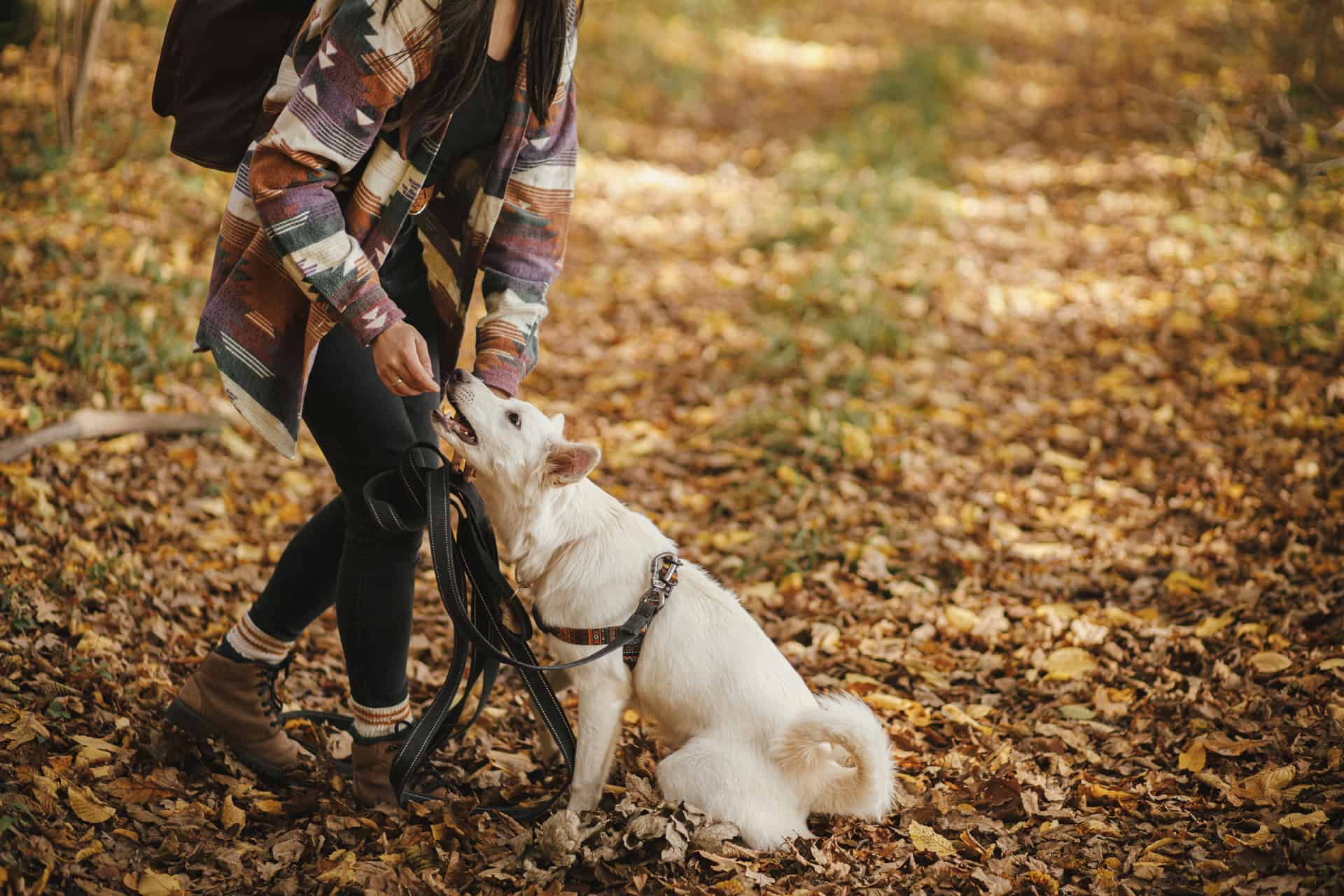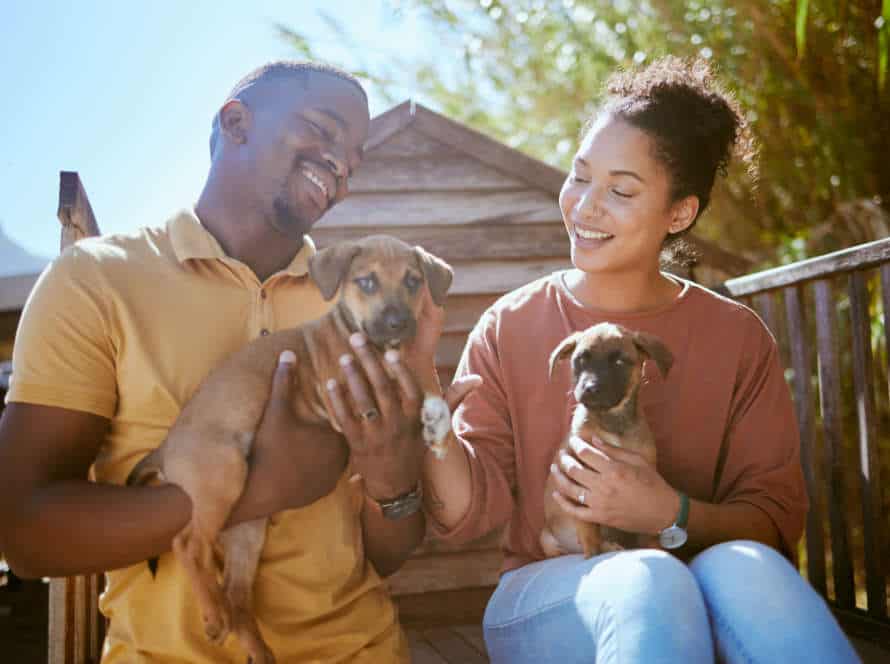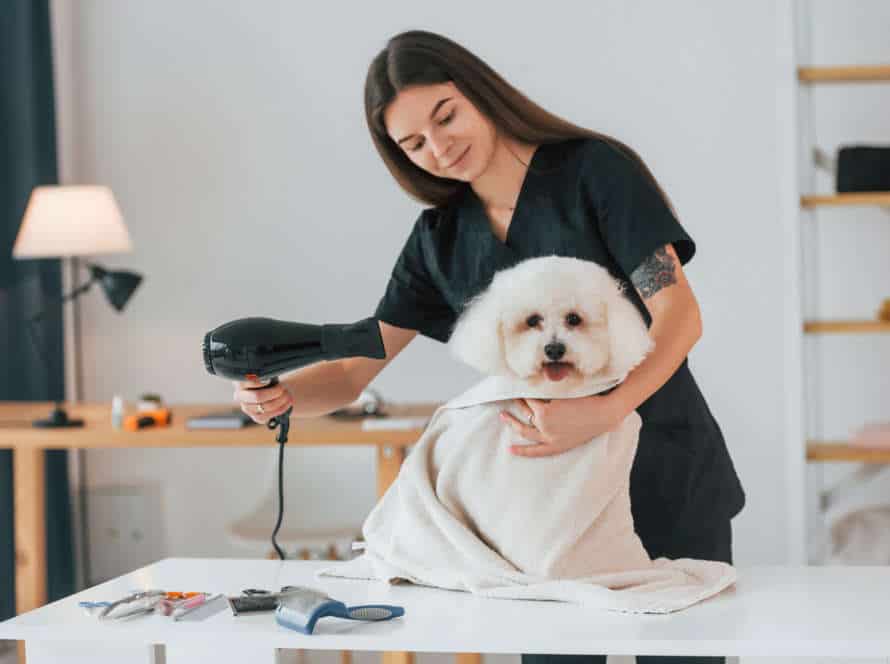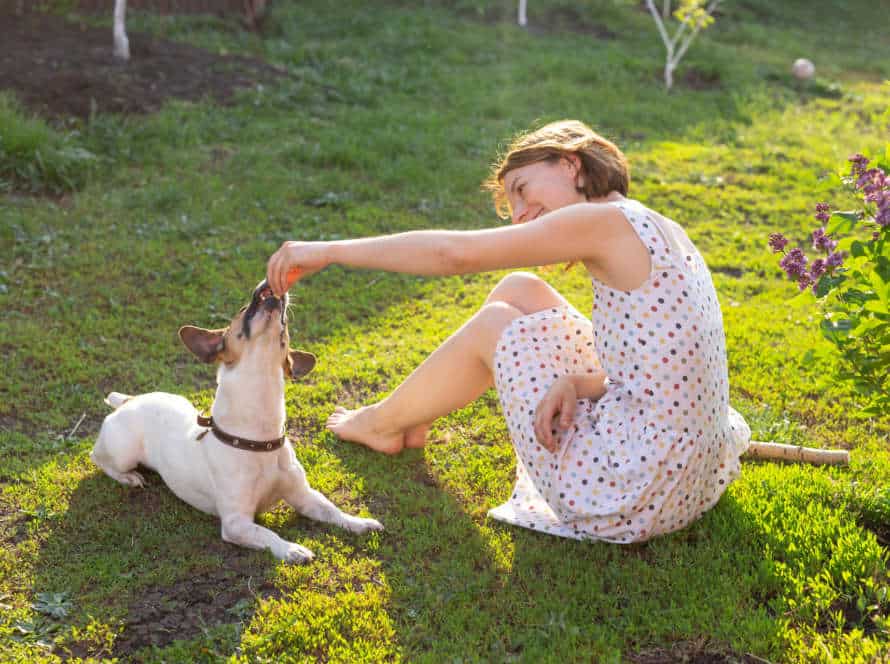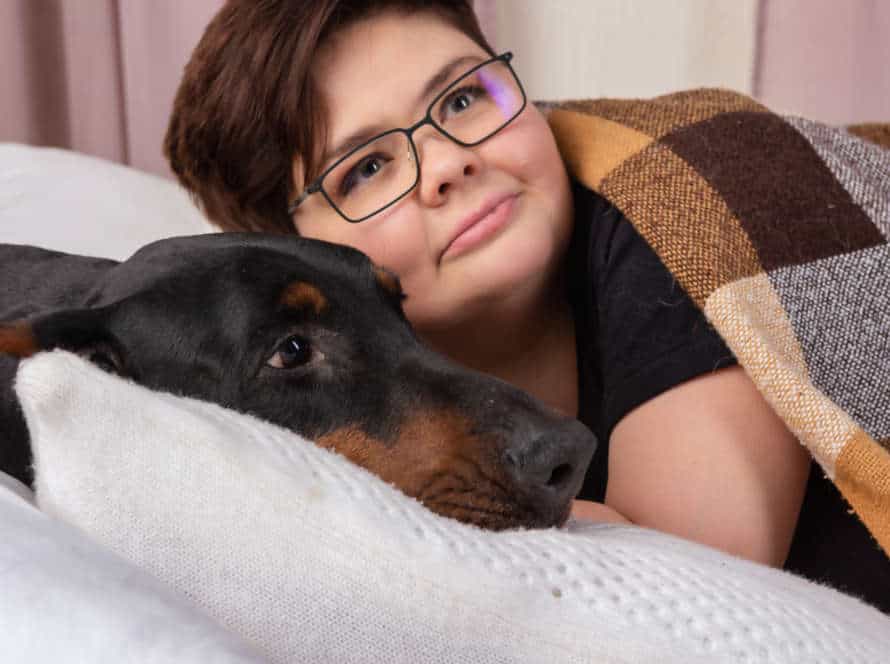Training Adult Dogs with Positive Reinforcement: Tips for Success
Positive reinforcement is an effective way to train adult dogs. To make it a success, here are some tips:
- Be consistent – use same words, treats and body language.
- Keep it brief – focus on fun, 15-20 min sessions.
- Be patient – behavior change takes time.
- Use high-value treats – pick treats your dog loves.
- Reward often – not just at end of session.
- Practice in different places – train in different places for better understanding.
- And most importantly, have fun and bond with your furry friend while building a positive relationship with positive reinforcement-based training!
Understanding Positive Reinforcement
Positive reinforcement can help teach adult dogs new behaviors. Rewards like treats, praise, or play when the dog performs the desired behavior, reinforces the behavior and encourages the dog to do it again. Understanding positive reinforcement is key to successful training of adult dogs. Let’s delve into how it works.
What is Positive Reinforcement?
Positive reinforcement is a training way that rewards good behavior in dogs. It encourages them with treats, petting, or praise when they do the right thing. This is based on the fact that if something good happens after a behavior, the dog is more likely to repeat it.
To train an adult dog with positive reinforcement, here are some tips:
- Begin with easy commands and reward them for getting it right.
- Always be consistent with rewards and timing.
- Use treats or favorite toys as rewards.
- As the dog becomes better, make the commands harder.
- Positive reinforcement also helps to build a connection between you and your dog.
Pro Tip: Positive reinforcement not only trains dogs but also builds a strong relationship.
Why is Positive Reinforcement Effective?
Positive reinforcement is an awesome way to train adult dogs. It rewards desirable behavior without causing harm or discomfort. Here’s why it works:
- It creates trust between dog and owner.
- It gives rewards for positive behavior, making the dog want to do it again.
- It keeps the pup focused and excited to learn.
- They stay happy while learning.
- It makes them confident and willing to follow commands.
Remember, consistency and timing are the two most important factors for success.
Pro tip: Use treats or verbal praise to reinforce new behaviors immediately.
Types of Rewards for Positive Reinforcement
Positive reinforcement is a great training technique. It helps you train your adult dog with love and kindness. There are various rewards you can give to reward good behavior.
- Food Rewards: Treats are a popular way to reward your pup. Small, soft treats are best as they are easy to eat.
- Toy Rewards: Toys also work great. Pick toys your dog loves, but only give them as rewards. This keeps them interested and motivated.
- Praise and Affection: Dogs love praise and cuddles from their owners. Use verbal cues and touch to show your pup how much you care.
- Playtime: Playtime is another great way to reinforce good behavior. Playing fetch or tug-of-war can help build a strong bond.
Remember – positive reinforcement takes time. Be consistent, and don’t use harsh punishment or negative reinforcement. Pro tip – Immediately reward your pup when they do something good.
Techniques for Positive Reinforcement Training
Positive reinforcement is a big part of modern pup training. When rightly used, it can be an effectual way to train adult dogs and aid them in obedience. Techniques of positive reinforcement training include rewarding, praising vocally, and ignoring unrequired behaviour. In this article, we’ll take a look at the top methods of positive reinforcement training.
Clicker Training
Clicker training is a popular type of positive reinforcement training for dogs. This technique involves using a clicker, a small handheld device that clicks when pressed. It marks desirable behavior and rewards the dog. Here are techniques for successful clicker training:
- Start with basic commands like ‘sit’ and ‘stay’.
- Be consistent with the timing and delivery of the click and treat.
- Keep the training sessions short and positive. Focus on one command at a time.
- Increase difficulty as your dog gets better.
- Use the clicker for positive reinforcement and rewards only. Not punishment.
With patience and repetition, clicker training can be an effective and fun way to train adult dogs.
Marker Training
Marker training is a great way to positively train adult dogs. Use a distinct sound or word, like a clicker or a certain phrase, to let the pup know they’ve done something right. Here are some tips to help you do it right:
- Pick a consistent marker. Choose something distinct each time.
- Use high-value rewards. Pieces of meat or cheese work well.
- Be clear and direct. Issue a command and use the marker sound once they’ve got it.
By following these tips, you can strengthen your bond and promote good behavior with your adult dog.
Luring
Luring is an amazing tool for positive reinforcement training. It teaches adult dogs new behaviors and tricks! To use it:
- Start with a yummy, smelly treat that your dog loves.
- Hold the treat near your pup’s nose and let them sniff it.
- Move your hand in the direction you want your pup to go. For example, move from their nose to their forehead if you want them to sit, saying “sit” at the same time.
- Once your pup follows the treat and does the desired behavior, reward them with the treat and verbal praise.
- Gradually reduce the movement of your hand and the distance of the treat from your pup’s nose. Do this until they respond to the command without the lure.
Remember – don’t over-rely on it or else your pup won’t be able to do the behavior without the lure. Practice and stay consistent in your training sessions. Always end on a positive note!
Common Mistakes to Avoid
Training a pup can be hard. Especially if it’s an adult doggo that has been out of an arranged system for a while. The goofs owners make when teaching adult dogs can cause them and their pup to fail. Knowing some of the usual goofs before can aid you and your pup to be successful in your training. This article will discuss some of the regular goofs to dodge when teaching adult dogs with positive reinforcement.
Inconsistency with Rewards
When training adult dogs with positive reinforcement, it is important to avoid inconsistency with rewards. Dogs need consistency to understand and succeed. Follow these tips for success:
- Define behaviors you want to reinforce.
- Set clear reward criteria.
- Give consistent rewards for desired behavior.
- Use high-value rewards like treats or toys.
- Be consistent with timing when rewarding.
Pro Tip: Track rewards used to help avoid training inconsistencies. Keep a record of behaviors and rewards used. This will help your pup's progress!
Timing Mistakes
Timing is key when training adult dogs with positive reinforcement. There are some mistakes to avoid for success.
- Delayed reinforcement. Dogs link the reward to the action just before it. So, reward right away after the desired behavior.
- Inconsistent timing. To teach the pup which action earns a reward, keep the timing consistent. If you only reward sometimes, they may not know what to repeat to get a treat.
- Reinforcing the wrong behavior. Double-check you are rewarding the correct action. If not, the dog may get mixed up and act out.
To train your adult dog well, avoid these timing mistakes. Consistency is the key.
Pro tip: If you missed the timing, use verbal praise to recognize the pup’s efforts until the next chance.
Overcomplicating the Training
One common blunder while training adult doggos with positive reinforcement is overcomplicating the process. How can this happen? Here’s how to prevent it: As a pup parent, you might be overwhelmed by the training process. You might want your doggo to learn commands right away. Remember, consistency is key and learning takes time. Don’t overload your doggo with too many commands in one session. This leads to confusion and distraction. Rather, focus on a few essential commands each session and build on them.
Pro Tip: Keep training sessions short. 5-10 minutes are enough for your doggo to learn a new command or behavior.
Practical Tips for Successful Positive Reinforcement
Positive reinforcement is an amazing way to train adult dogs! It gives us the power to encourage our beloved pooches to make smart choices. To get the most out of it, here’s some handy tips. Use positive reinforcement correctly! Have successful training sessions!
Start with Basic Commands
Training an adult dog? Start with basics. Here’s how to succeed with positive reinforcement:
- Use simple commands. Just one single word or a short phrase. Make sure it’s easy to understand. Keep it consistent.
- Reward consistently. Treats or praise.
- Patience and consistency are key. Training takes time, so don’t get frustrated.
- Keep training sessions short. Adult dogs have shorter attention spans. Short and frequent instead of long.
- End on a high note. Lots of praise and treats for positive behavior. This encourages enthusiasm!
Use High-Value Rewards
High-value rewards are a great way to use positive reinforcement training for adult dogs. Here are some of them:
- Food – Try using yummy treats like cooked chicken, cheese, or hot dogs to motivate your pup.
- Toys – If your pup is more motivated by playtime, use their fave toys to reward good behavior.
- Praise – Verbal praises and affection are also powerful rewards. Use a happy and upbeat tone to show your dog they’re doing great!
It’s key to use different rewards and find out what makes your pup happiest. With high-value rewards, you can make training fun for your furry friend.
Gradually Increase the Difficulty
Gradually making tasks harder is key to successful positive reinforcement training for adult dogs. It stops them getting bored, keeps them involved, and helps them keep progressing. Here are some tips:
- Start off with easy tasks and rewards, then get tougher.
- Use rewards that your dog likes, like treats, toys, or praise.
- Put in distractions and obstacles so they learn to concentrate and do tasks right.
- Change up your training often, so they stay interested.
- Regularly check if your dog is making progress, and change the plan if needed.
Positive Reinforcement for Challenging Behaviors
Positive reinforcement is a great way to train adult dogs. Rewarding desired behaviors encourages them to keep doing them. But using it for hard behaviors can be tricky. Here are some tips for successful positive reinforcement of adult dogs!
Separation Anxiety
Separation anxiety in adult dogs is a common issue for pet owners. A tried-and-true technique to address tricky behaviors like this is positive reinforcement. Here are some helpful tips to train adult dogs with positive reinforcement:
- Begin with brief separations and gradually increase the time. Reward the pup for remaining calm during and after the separation.
- Encourage your dog to make positive connections with toys, treats, and activities that challenge them mentally and physically.
- Use positive reinforcement tactics like clicker training, treats, and praise to express and reward good behavior.
- Make few changes to the pup’s routine to create a predictable, comfortable atmosphere.
- If the dog’s behavior persists or worsens despite your attempts, seek professional help.
By being patient, consistent, and using positive reinforcement, you can assist your adult pup in beating separation anxiety and developing a strong bond with you.
Aggression
Handling aggression in pooches can be tricky. But, positive reinforcement training can help modify it. Check out these tips for success:
- Figure out what causes your pup to become aggressive and try to stop it.
- Set up a secure environment for your pup with lots of exercise, socialization and mental stimulation.
- Reward good behaviour with treats, toys and praise, instead of punishing bad behaviour.
- Work with a professional dog trainer or behaviourist to make a personalised training plan tailored to your pup’s needs.
- Persevere and be consistent in training. Give yourself a pat on the back when you make little wins.
Fearfulness
Fearfulness in dogs can stem from many sources: past trauma, lack of socialization, or genes. Positive reinforcement training can help your adult dog overcome their fearfulness and build confidence.
Here are some tips for success:
- Encourage positive behaviors with treats and praise, like approaching people or other dogs calmly.
- Create a safe & positive environment by minimizing stress. Provide a “safe space” for your dog to retreat to.
- Never punish or scold them for fearful behaviors; it can worsen the fear.
- Let your dog progress at their own pace and celebrate little successes.
By using positive reinforcement & patience, you can help your dog overcome their fearfulness and build a better relationship.
Positive Reinforcement vs. Other Training Methods
Training your adult pup is key for their progress. This can be the difference between a content, healthy pet and one who’s disobedient and damaging. Different methods of training can result in diverse outcomes, so it’s essential to be aware of the available options. We’ll consider the pros and cons of positive reinforcement training versus other approaches in this section.
Positive Reinforcement vs. Punishment Training
Positive reinforcement is a dog training technique that rewards good behaviour, instead of punishing bad behaviour. It works for adult dogs and puppies.
This method builds trust between the dog and the owner and encourages the dog to learn voluntarily. Here are tips to make it successful:
- Use yummy treats as rewards.
- Be consistent with commands and rewards.
- Keep training sessions short and positive.
- Use a gentle, encouraging tone.
- Observe your dog’s body language and adjust training.
With positive reinforcement, you can teach your dog new behaviours and strengthen your bond.
Pro tip: Patience and consistency are vital. Reward and praise your dog for good behaviour. Calmly redirect undesired behaviour. Over time, your dog will learn to respond to your commands and become a great companion.
Positive Reinforcement vs. Negative Reinforcement
Positive reinforcement is a technique that rewards desired behavior, instead of punishing bad behavior. This strategy works better to motivate long-term learning and establish positive associations with training. It’s different from negative reinforcement, which removes something unpleasant to encourage good behavior. Other training methods rely on punishments or physical corrections, which can hurt the dog and damage the bond between the owner and dog.
When using positive reinforcement, you must be consistent, patient, and use treats or praise that the dog loves. Timing is key too, as rewards should be given right after the desired behavior happens. If done correctly, positive reinforcement is a humane way to train adult dogs.
Pro tip: If you’re having trouble with positive reinforcement training, look for help from a professional dog trainer who can provide guidance and support.
Advantages of Positive Reinforcement Training.
Positive reinforcement training is a great way to train adult dogs. It has many advantages! Here are the top 4:
- It builds a strong bond between owner and dog. Positive reinforcement makes training sessions enjoyable for both.
- It results in long-lasting behavior change. This method encourages good behavior, creating long-lasting habits and eliminating bad ones.
- It won’t harm the dog’s psyche. Unlike punitive methods, positive reinforcement does not instill fear.
- It works with all breeds and ages.
Remember, consistency and timing are essential for success when using positive reinforcement to train your adult dogs.
Frequently Asked Questions
Q: What is positive reinforcement dog training?
A: Positive reinforcement dog training is a training method that focuses on rewarding good behavior rather than punishing bad behavior. The rewards can come in the form of treats, praise, or playtime, and the goal is to encourage the dog to repeat the desired behavior.
Q: How can I use positive reinforcement to train my adult dog?
A: Start by identifying the behaviors you want to reinforce. When your dog displays one of these behaviors, reward them immediately with a treat, praise, or affection. Be consistent in your rewards, and gradually increase the difficulty of the behaviors you’re asking for.
Q: Are there any negative side effects to using positive reinforcement?
A: No, positive reinforcement is a safe and effective training method that won’t cause harm to your dog. It’s important to note, however, that positive reinforcement shouldn’t be the only training method you use. Dogs also need to learn boundaries and consequences for bad behavior.
Q: Can I train an adult dog that has been previously trained using negative reinforcement?
A: Yes, you can still use positive reinforcement to train an adult dog that has previously been trained using negative reinforcement. However, it may take longer for the dog to learn new behaviors and un-learn old ones.
Q: What do I do if my dog isn’t responding to positive reinforcement?
A: It’s possible that your dog isn’t motivated by the rewards you’re using. Try changing up the treat or toy you’re offering, or adjusting the timing of the reward. You can also try using a clicker to add an auditory cue to the training.
Q: How long does it take to train an adult dog using positive reinforcement?
A: The amount of time it takes to train an adult dog using positive reinforcement depends on the dog’s breed, temperament, and history. Generally, it’s best to start with simple behaviors and gradually work up to more complex ones. Some dogs may learn quickly, while others may take several weeks or even months to master a behavior.

